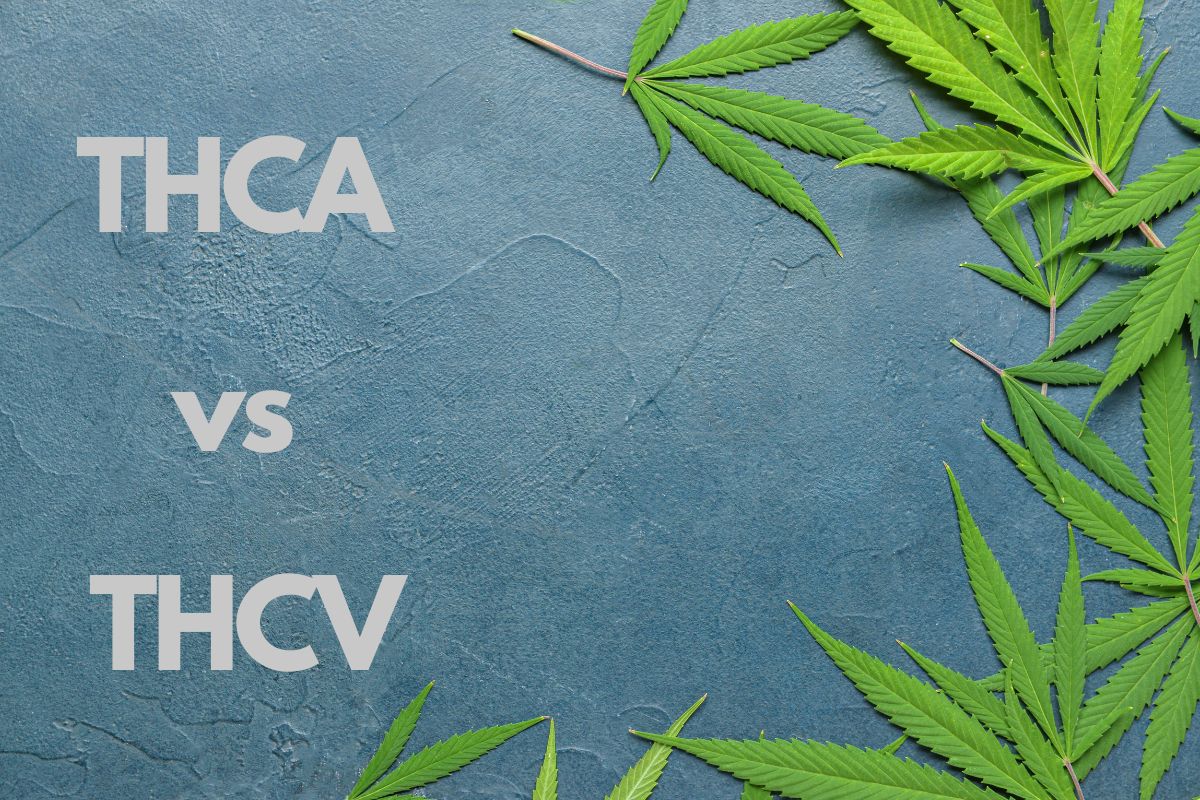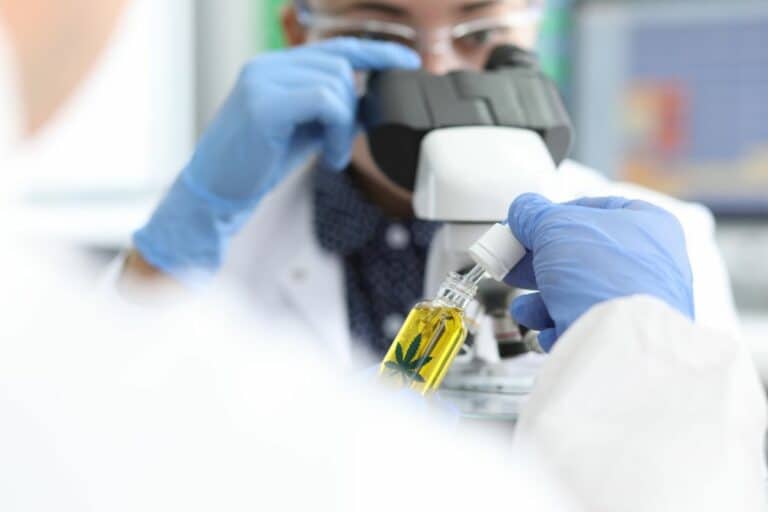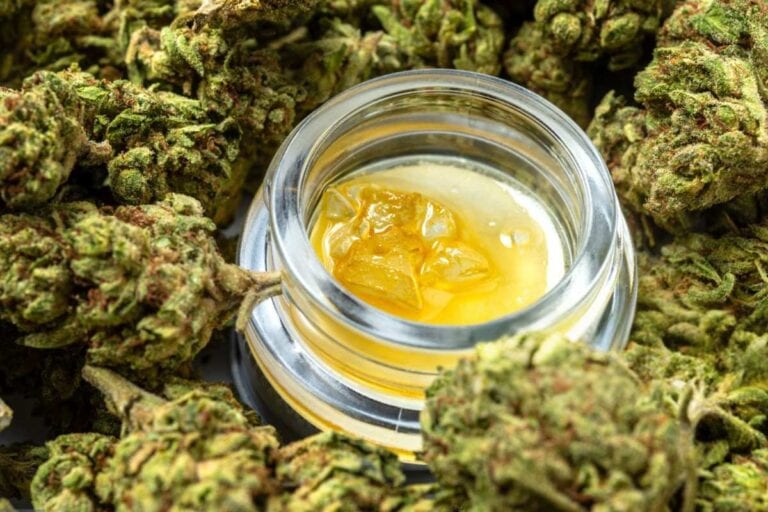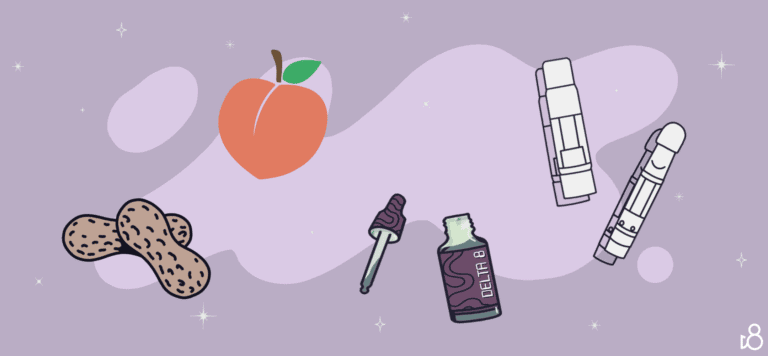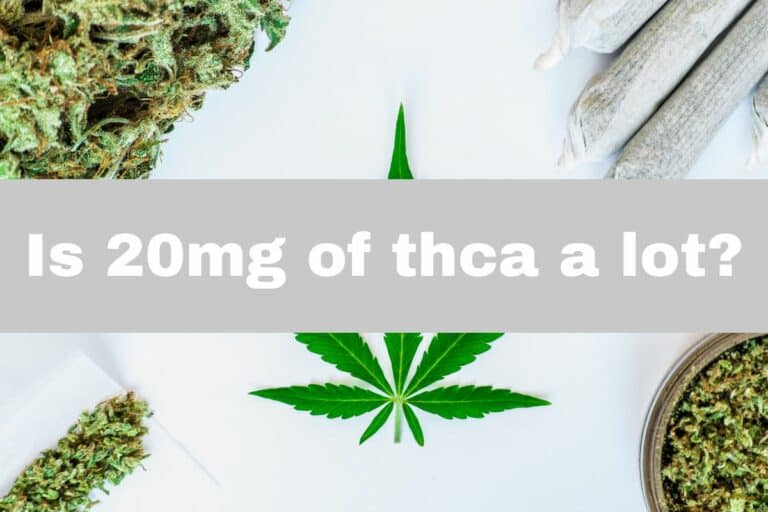THCa vs THCV: Understanding the Differences and Effects
Diving into the wild and wonderful world of cannabis, **THCa** and **THCV** shine like hidden gems. While the buzz usually revolves around THC, the star player that takes you to cloud nine, there’s a whole other side to explore. **THCa** sits quietly in the fresh leaves, chill as can be, with no head-spinning effects but packed with neat goodies. And then there’s **THCV**, the compound that dances to its own beat. These cool facts often fly under the radar but they play a big part. Dialing into **their advantages** unveils a fresh slice of the cannabis pie, far removed from just the high. Imagine unlocking the mysteries of these key players. Their stories could flip the script for anyone venturing into the lush fields of cannabis. So, why hang around? Discovering the intriguing tales of **THCa** and **THCV** might elevate you to a cannabis connoisseur.
Table of contents
On the other hand, THCV, while similar in molecular structure to THC, provides a different array of effects. It’s known for the potential to provide a clearer, more energetic high compared to THC, albeit at relatively high doses. Unlike THCa, THCV does display psychoactive effects, but it also boasts properties that could affect appetite and insulin regulation. Importantly, the psychoactive effects of THCV are only apparent in significant concentrations, which isn’t always the case in common cannabis strains.
Your understanding of cannabinoids like THCa and THCV is key for navigating the complex landscape of cannabis and its effects on the body. Investigation into how these cannabinoids interact with the body’s endocannabinoid system can provide insights into their potential therapeutic applications. While both are found in various concentrations in cannabis plants, they each play distinct roles and are being studied for their unique influence on physiological and psychological well-being.
Understanding Cannabinoids
Navigating the world of cannabinoids like THCa and THCV, you’ll encounter a wealth of chemical complexity emerging from the cannabis plant. Your grasp of their unique structures and interactions with cannabinoid receptors will enhance your understanding of their effects and potential applications.
Cannabis Plant and Cannabinoid Basics
The cannabis plant produces a spectrum of natural compounds known as cannabinoids, central to which are THCa (tetrahydrocannabinolic acid) and THCV (tetrahydrocannabivarin). These compounds are found in varying concentrations within the plant’s trichomes, the resin glands that also produce terpenes responsible for the plant’s distinct aroma and flavor attributes.
Chemical Structure and Properties
- THCa: This is the non-psychoactive precursor to THC, which becomes psychoactive after decarboxylation, a process that occurs when cannabis is heated.
- Chemical Structure: THCa has a carboxyl group (COOH) that differentiates it from THC.
- THCV: Distinctly different from THCa, THCV is similar to THC but with a propyl side chain instead of a pentyl group in its molecular structure.
- Properties: Known for potentially suppressing appetite, unlike THC, which is commonly associated with an increased appetite.
Understanding the chemical structure of these cannabinoids reveals insights into their unique properties. For instance, while THCa is non-psychoactive, through the process of decarboxylation, it converts to THC, which interacts robustly with cannabinoid receptors.
Cannabinoid Receptors: CB1 and CB2
Cannabinoids bind to cannabinoid receptors in the body. There are two primary receptors:
- CB1: Located primarily in the brain and central nervous system, linked to the psychoactive effects of THC.
- THCa binds to CB1 receptors, but with much lower affinity compared to THC.
- CB2: Found throughout the body on cells of the immune system, related to anti-inflammatory effects.
- THCV may influence these receptors differently, potentially offering a range of therapeutic effects, as described in this comprehensive review on cannabinoids and their receptors.
By understanding the binding affinities and action on CB1 and CB2 receptors, you can begin to predict the effects and therapeutic potential of each cannabinoid, shaping the direction of future research and application.
Psychoactive Effects
Exploring the psychoactive properties of cannabinoids is key to understanding their effects on your mind. THC, THCa, and THCV each have distinct intoxicating properties that affect you differently.
Understanding Psychoactivity
Psychoactive substances affect your brain function, leading to alterations in perception, mood, consciousness, cognition, and behavior. Specifically, THC is well-known for its psychoactive effects, which can produce a high that affects your mental state.
THC vs. THCa: Intoxicating Properties
THC (tetrahydrocannabinol) is the cannabinoid famous for its intoxicating effects. When you consume products containing THC, it can induce a sense of euphoria—or what is commonly referred to as being high. In contrast, THCa (tetrahydrocannabinolic acid), is a non-psychoactive precursor to THC found in raw cannabis plants. It does not produce intoxicating effects on its own, as it lacks affinity for your brain’s cannabinoid receptors. However, when heated, THCa undergoes decarboxylation and becomes THC, obtaining the ability to elicit psychoactive effects.
THCV and Its Psychoactive Profile
THCV (tetrahydrocannabivarin), though similar in name, has a different impact on your psychoactive experience. At lower doses, THCV may offer a clear-headed effect, lacking significant intoxication. However, at higher doses, THCV can exhibit psychoactive properties, though these effects can vary and may be less potent than those of THC. Its unique profile may influence the overall psychoactive experience when combined with other cannabinoids.
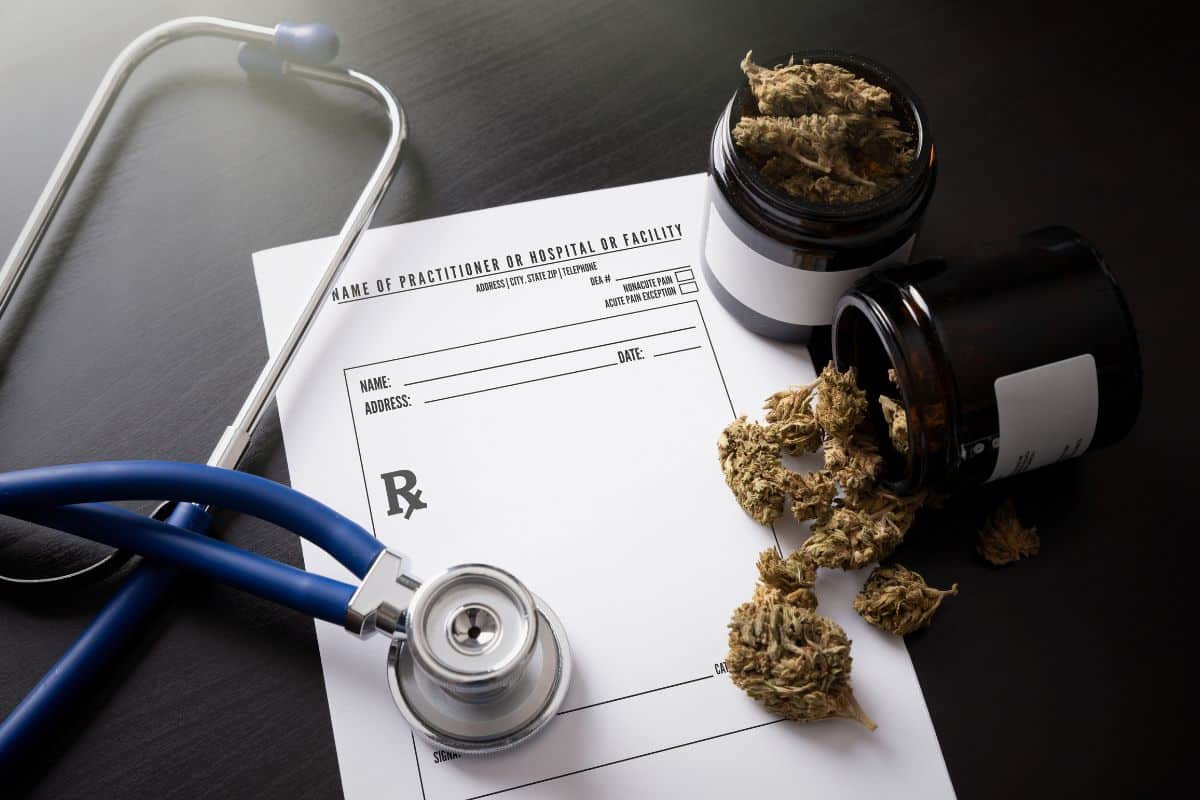
Health and Therapeutic Potential
Cannabinoids THCa and THCV have garnered attention for their unique effects on health, offering a range of therapeutic potentials distinct from the well-known THC.
Therapeutic Benefits of Cannabinoids
THCa (Tetrahydrocannabinolic Acid):
- Potential therapeutic benefits: THCa is a non-psychoactive precursor to THC, with preliminary research suggesting possible therapeutic roles.
- Relevant article: Highlights the investigation into the therapeutic potential of THCa.
THCV (Tetrahydrocannabivarin):
- Therapeutic applications: Though research is still in early stages, THCV is suggested to have therapeutic benefits that may assist with weight management and glucose control.
- Useful overview: Discusses minor cannabinoids, including THCV, and their potential therapeutic uses.
Anti-Inflammatory and Neuroprotective Effects
THCa:
- Anti-inflammatory properties: THCa has been shown to have anti-inflammatory benefits that could aid with inflammatory conditions.
THCV:
- Neuroprotective properties: THCV holds neuroprotective properties, which might be beneficial in protecting brain cells and managing neurodegenerative diseases.
Cannabinoids in Disease Management
THCa:
- Neurodegenerative diseases: Evidence suggests that THCa could play a role in managing conditions such as multiple sclerosis, due to its neuroprotective effects.
THCV:
- Arthritis and inflammatory conditions: The potential anti-inflammatory properties of THCV indicate a promising approach in mitigating symptoms of arthritis and similar inflammatory conditions.
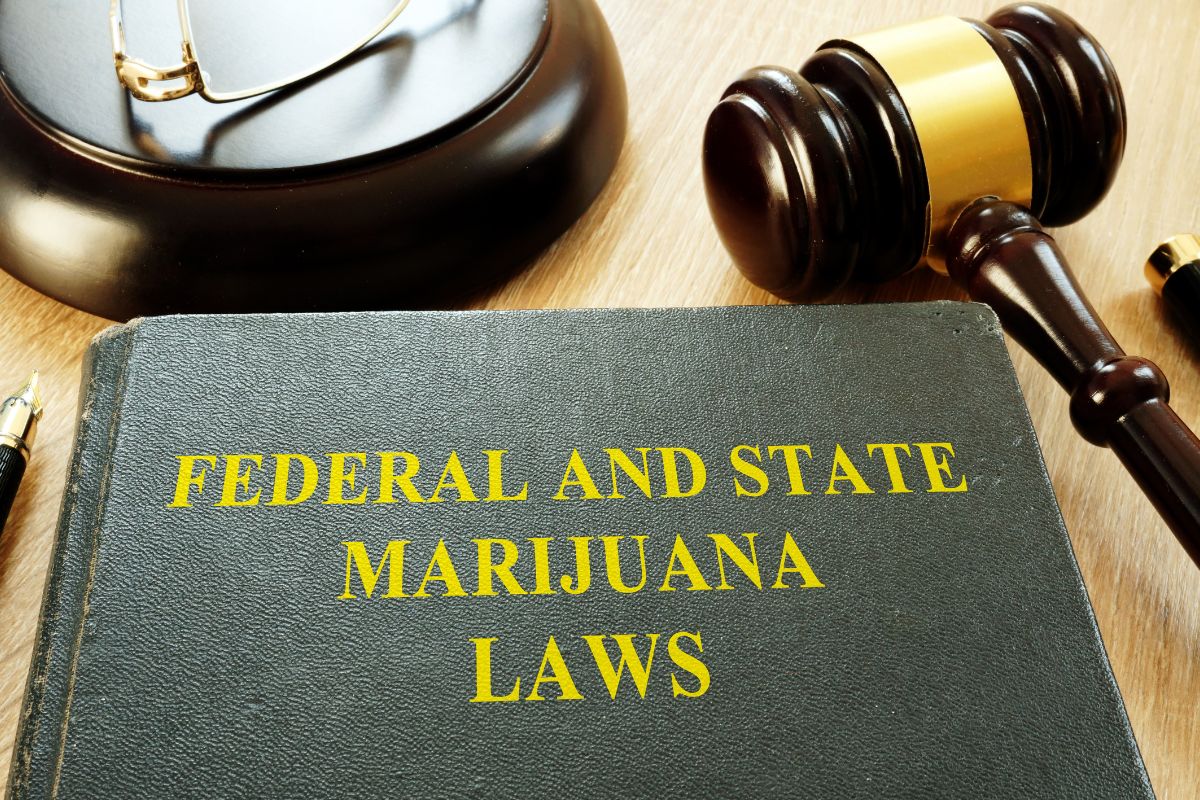
Legal Status and Federal Law
As you navigate the complexities of cannabinoids like THCa and THCV, it’s crucial to understand the legal framework that governs them. Below, you’ll find a concise evaluation of the current federal laws that impact their legal status, particularly under the 2018 Farm Bill, focusing specifically on the legality of hemp and its derivatives.
Legal Landscape of Cannabis
Cannabis’s legal landscape in the United States is differentiated by the specific chemical compositions of the plant’s derivatives. Cannabinoids such as delta-9-tetrahydrocannabinol (THC) are pivotal in determining legality. Federal law classifies cannabis with more than 0.3% THC as marijuana, which remains a Schedule I substance under the Controlled Substances Act. However, cannabinoids like Tetrahydrocannabinolic acid (THCa) and tetrahydrocannabivarin (THCV), precursors and variants of THC, occupy a gray area as they are not explicitly referenced in the federal scheduling.
Farm Bill and Hemp-derived Products
The 2018 Farm Bill was transformative for the legal status of hemp and its derivatives. The bill defines hemp as the Cannabis sativa L. plant with a delta-9 THC concentration of 0.3% or less on a dry weight basis. Hemp-derived products like CBD oil have gained legality if they adhere to the THC threshold. This has bearing on the legal status of THCa and THCV; as long as these compounds are derived from legal hemp and do not cause the product to exceed the THC limit, they would similarly be considered legal at the federal level. It’s important to note, however, that while hemp’s arbitary 0.3% THC legal standard exists, there is ongoing debate regarding how THCa is accounted for in this threshold since it can convert to delta-9 THC upon combustion or decarboxylation.
Consumption and Effects
In exploring the consumption and effects of THCa and THCV, you’ll discover that these cannabinoids have distinct methods of use and unique impacts on your body, particularly in relation to appetite and weight.
Various Consumption Methods
THCa, or tetrahydrocannabinolic acid, is commonly found in raw and live cannabis. As a non-psychoactive precursor to THC, THCa can be consumed in several ways:
- Raw cannabis: Juicing or eating raw cannabis leaves can provide THCa.
- Dabbing: When THCa crystalline is heated, it decarboxylates to THC, which can then be inhaled.
- Smoking/vaping: THCa converts to THC upon burning or vaporization, allowing for inhalation.
THCV, or tetrahydrocannabivarin, shares some methods of consumption with THCa but typically exists in lower concentrations within most cannabis strains:
- Smoking/vaping: By heating cannabis strains high in THCV, you can inhale the active compound.
- Edibles: Specially formulated products can contain THCV for oral consumption.
Effects on Appetite and Weight
Appetite:
- THCa: While not directly affecting your appetite when unprocessed, THCa converts to THC when decarboxylated, which may stimulate appetite, a phenomenon known as “the munchies.”
- THCV: In contrast to THCa, THCV is an appetite-suppressing cannabinoid. Studies have shown its potential in weight management and reducing the craving for food.
Weight Loss:
- THCV has garnered attention for its role in obesity management, with some research suggesting that it could assist in weight loss due to its appetite-suppressing effects. The impact on your weight will largely depend on your individual metabolism and the overall composition of your diet and lifestyle.
Both cannabinoids demonstrate unique properties, with THCa predominantly found in raw cannabis forms and THCV being explored for its appetite-suppressing qualities. Your consumption method will determine the onset and duration of effects, and it’s clear that each has potential applications in the context of appetite control and weight management.

Cannabis Strains and Types
When exploring the complex world of cannabis, it’s crucial to understand the different strains and their unique chemical compositions. Your familiarity with Indica, Sativa, Hybrid varieties, and the prevalence of cannabinoids like THCa and THCV will enhance your selection process.
Indica, Sativa, and Hybrid Varieties
Cannabis strains are traditionally categorized into three primary types: Indica, Sativa, and Hybrid. Indica varieties are known for their physically sedating effects, often helpful for relaxation and relief from body discomforts. Sativa strains typically provide more invigorating, uplifting cerebral effects that pair well with physical activity, social gatherings, or creative projects. Hybrids are a genetic cross between these two types, bred to attain a specific blend of Sativa and Indica properties.
THCa and THCV Prevalence in Strains
While THC is the most well-known component associated with the psychoactive effects of cannabis, its precursors and variants like THCa and THCV have specific properties that contribute to a strain’s overall profile:
- THCa (Tetrahydrocannabinolic Acid): Non-psychoactive and found in raw and live plants, THCa converts to THC when decarboxylated (exposed to heat). The discovery of the THCa synthase gene helps distinguish between drug-type and fiber-type plants, where drug-type plants are high in THCa content.
- THCV (Tetrahydrocannabivarin): A compound known for a more clear-headed, stimulating high, often found in strains like Durban Poison. It’s less prevalent than THCa and can potentially offer different effects, such as the reduction of panic attacks and promotion of bone growth.
As you dive into the world of cannabis strains, remember that each flower carries its unique signature of cannabinoid concentrations, influencing its therapeutic and experiential properties.
Extraction, Concentrates, and Products
In the realm of cannabis extracts, the processes and end products vary greatly, particularly when it comes to THCa and THCV. Your understanding of these compounds starts with their extraction, conversion, and the array of cannabis concentrate products available.
Decarboxylation and Activation of THCa
THCa is the non-psychoactive precursor to THC, which becomes active when exposed to heat in a process called decarboxylation. This chemical reaction removes a carboxyl group from THCa, converting it into Δ9-THC, the compound known for its psychoactive effects. During extraction methods such as CO₂, ethanol, or butane extraction, THCa is often the dominant cannabinoid. After extraction, decarboxylation can be performed by heating the extract to a specific temperature, thus activating THC for use in various products like tinctures and gummies.
THCa Diamonds and Other Concentrates
THCa diamonds refer to a crystalline form of THCa that can be extracted from cannabis plants, typically using a solvent-based method followed by careful evaporation and separation processes. These diamonds are known for their purity and potency and can be consumed as is or further processed into other concentrates. Other concentrates include waxes, shatters, and oils, each offering a different experience and potency level depending on the method of extraction and the raw material used.
Commercial Products and Formulations
On the commercial front, cannabis products containing THCa and THCV are diversifying. You’ll find THCa in tinctures, often labeled as “raw” since they haven’t undergone decarboxylation, preserving the acid form of THC. Gummies and other edibles may contain either THCa or THCV, with the latter being less common and primarily sought after for its purported effects on energy levels and appetite control. Manufacturers carefully calibrate their extraction methods and formulations to meet consumer demand for consistency and desired outcomes in both concentrates and the final product offerings.

Safety and Dosage
When considering THCa and THCV, your safety and the dosage are of paramount importance. Understanding the difference in potency and effects of these cannabinoids will guide you in achieving desired outcomes and avoiding adverse reactions.
Determining Proper Dosage
THCa (Tetrahydrocannabinolic Acid): THCa is the non-psychoactive precursor to THC, which converts to THC when decarboxylated, often through heat. Proper dosing of THCa is crucial because it can affect individual experiences, and dosing may vary based on your consumption method. For instance, a study found that a safe starting dose of THC (converted from THCa) can be around 2.5 mg. Always start with a low dose to assess your tolerance.
- Inhalation: If THCa is being administered through inhalation after decarboxylation, begin with one small puff and wait to determine its effects.
- Oral Consumption: When taking THCa orally, it is important to be aware that the conversion rate to THC may be unpredictable and starting with a low dose is advisable.
THCV (Tetrahydrocannabivarin): THCV is known to be less psychoactive than THC and may offer different effects. Accurate dosing information for THCV is still emerging, but it is generally understood that THCV should also be used in moderation, especially for those new to this cannabinoid.
- Method of Consumption: The dosage may differ if THCV is consumed as an oil, capsule, or through inhalation. Each method delivers different amounts to your system and at different rates.
Consulting Healthcare Professionals
It’s vital to consult with a healthcare professional before integrating THCa or THCV into your routine, especially if you’re currently on medication or have underlying health conditions. They can provide personalized recommendations based on your health history and intended use. This step ensures that you can use THCa and THCV safely and effectively, considering your unique health context.
- Guidance on Consumption Methods: A medical professional can guide the suitable method of consumption and the starting dosage, which may vary depending on your medical condition and cannabinoids used.
- Monitoring Adverse Effects: They can also help monitor for adverse effects and adjust dosage as needed, providing a layer of safety in your cannabinoid use.
Frequently Asked Questions
In this section, you’ll find precise, in-depth answers comparing THCa and THCV, two different cannabinoids found in the cannabis plant, focusing on their effects, potential benefits, and presence in various strains.
What are the key differences between THCa and THCV in terms of their effects on the body?
THCa (Tetrahydrocannabinolic Acid) is a non-psychoactive precursor to THC, the main intoxicating compound in cannabis. When exposed to heat through decarboxylation, THCa converts into THC, which can lead to psychoactive effects. THCV (Tetrahydrocannabivarin), on the other hand, is a cannabinoid known for its appetite-suppressing properties and may have a stimulating effect on your body, which is typically less potent than THC.
Can consuming THCa or THCV products contribute to weight loss, and if so, how?
There is some evidence that THCV may help with weight loss by reducing appetite and increasing energy expenditure. Unlike THCa, which does not directly affect weight since it lacks psychoactive properties, products containing THCV could influence body weight management owing to its influence on appetite and metabolism.
What distinguishes THCa from THCV in the experience offered by edibles containing these cannabinoids?
Since THCa is non-psychoactive, it will not produce the high associated with THC in edibles unless it is decarboxylated into THC during the preparation process. Edibles containing THCa are typically consumed for their potential therapeutic benefits without psychoactivity. Conversely, edibles with THCV may deliver a subtle psychoactive experience along with an energizing effect, and, as with THCa, may offer therapeutic benefits.
How do the psychoactive properties of THCa compare to those of THCV?
THCa is non-psychoactive, so it does not induce a high like THC. THCV has psychoactive properties but they are less intense compared to THC, and the effects can vary significantly among different users. Higher doses of THCV can produce a clear-headed, stimulating high.
What are the typical concentrations of THCa found in high-quality cannabis strains?
The concentrations of THCa in high-quality cannabis strains can vary widely. Many high-THC strains may contain THCa levels upwards of 20%, as THCa is the acid form of THC before decarboxylation. It’s essential to review laboratory results for specific cannabis products to determine the exact concentration.
What are some notable strains that are particularly rich in THCV?
Some cannabis strains are specifically known for their high THCV content. African sativas like Durban Poison and strains like Doug’s Varin and Pineapple Purps are renowned for being rich in THCV. Users seek out these strains for both their unique effects and potential therapeutic benefits.

